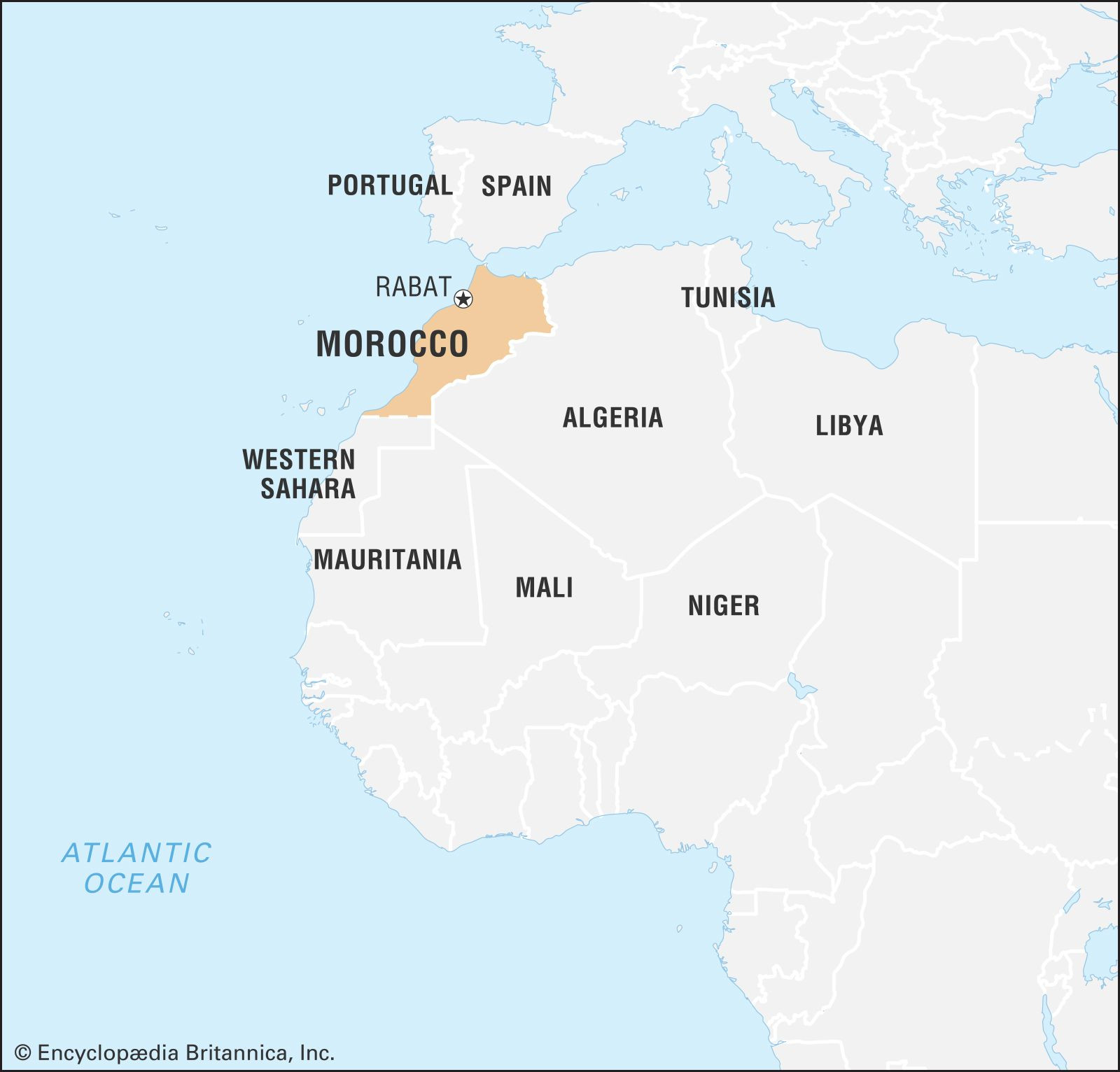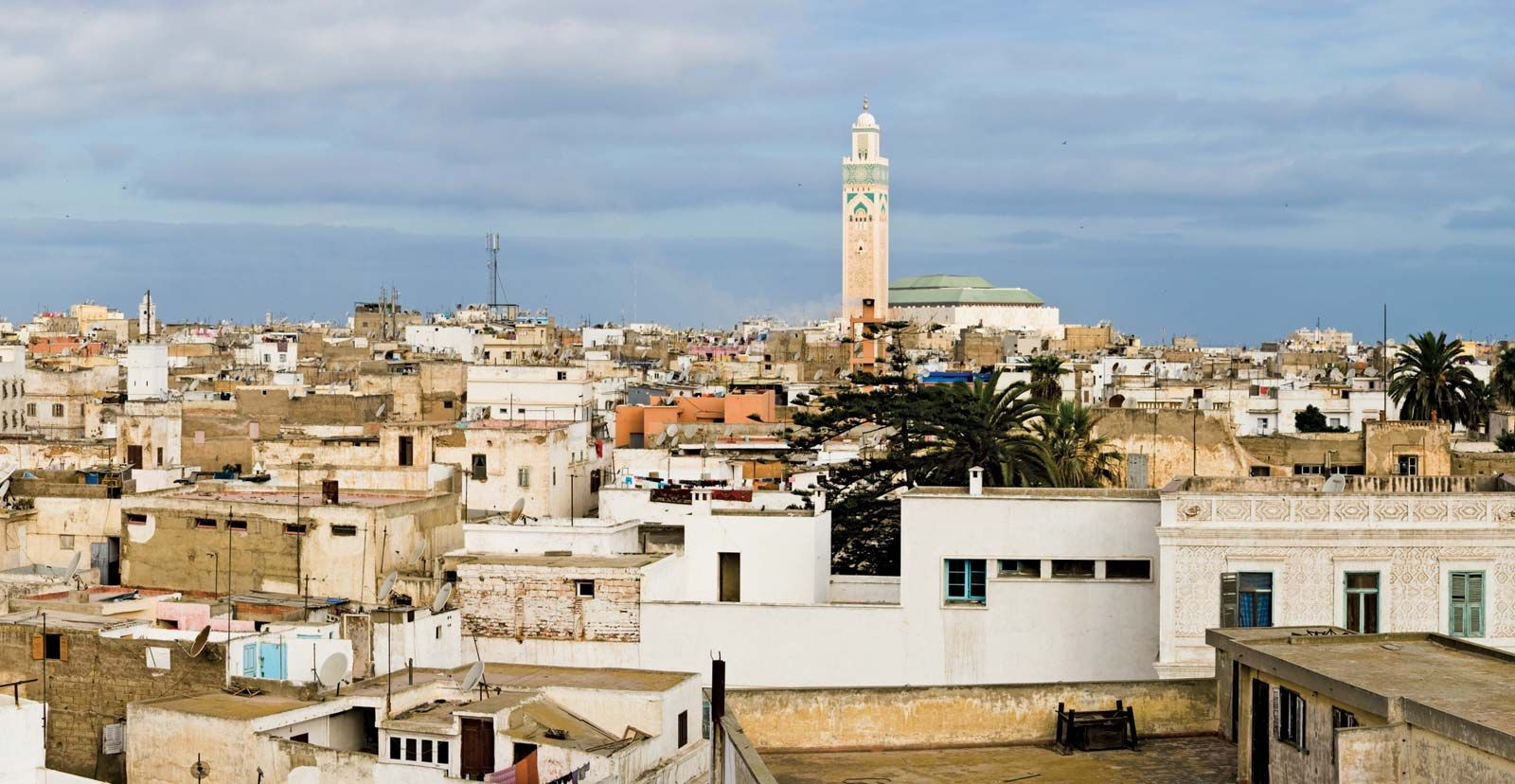Morocco, a land of vibrant culture, stunning landscapes, and rich history, beckons travelers and explorers from across the globe. But before embarking on a journey to this North African jewel, a fundamental question arises: where is Morocco? Nestled in a strategic corner of the world, Morocco’s location is not just a matter of coordinates; it’s key to understanding its unique identity and captivating charm.
To pinpoint where Morocco is, geographically, we find it gracing the northwestern tip of Africa. This privileged position means Morocco is uniquely bordered by both the vast Atlantic Ocean to the west and the shimmering Mediterranean Sea to the north. Imagine a country where you can witness the sunrise over the Mediterranean and sunset into the Atlantic – that’s Morocco.
Beyond its oceanic embrace, Morocco’s location is further defined by its continental neighbors. To the east and southeast, Algeria shares a border, while to the south lies Western Sahara. Crucially, just a stone’s throw across the Strait of Gibraltar, Europe, specifically Spain, is visible on the horizon. This proximity to Europe has profoundly shaped Moroccan history and culture, creating a fascinating blend of African, Arab, and European influences.
To further illustrate Morocco’s location, consider its coordinates. Roughly situated between latitudes 21° and 36° N, and longitudes 1° and 17° W, Morocco occupies a space slightly larger than the state of California in the United States, excluding Western Sahara. This area encompasses a diverse topography, ranging from fertile coastal plains to towering mountain ranges and the vast expanse of the Sahara Desert.
Delving deeper into where Morocco is reveals its strategic importance throughout history. Its control of the Strait of Gibraltar, the narrow passage connecting the Atlantic Ocean and the Mediterranean Sea, has made it a coveted crossroads for trade and cultural exchange for millennia. This geographical advantage is further emphasized by its position as the only African nation with coastlines on both the Atlantic and Mediterranean.
Within Morocco itself, the landscape is dramatically varied. The Rif Mountains hug the northern coastline, while the majestic Atlas Mountains, traverse the country’s interior, offering breathtaking scenery and serving as a vital water source. South of the Atlas, the Sahara Desert begins its sweeping journey across the continent, painting the southern regions of Morocco with iconic dunes and arid beauty.
Morocco’s key cities further exemplify its diverse geography. Rabat, the capital, sits on the Atlantic coast, a city where modernity meets historical charm. Casablanca, the largest city, also on the Atlantic, is a bustling economic hub and a major port. Tangier, located on the Strait of Gibraltar, serves as a gateway between Africa and Europe. Fes, and Marrakech, nestled inland, are cultural hearts, famed for their ancient medinas and rich traditions.
Understanding where Morocco is is more than just knowing its location on a map. It’s about grasping how its geography has shaped its identity. Morocco stands as a bridge between continents, a meeting point of oceans and deserts, and a fascinating blend of cultures. From its strategic coastal locations to its dramatic interior landscapes, Morocco offers a geographical tapestry as rich and varied as its history and people. So, when you ask “where is Morocco?”, the answer is: at the heart of a captivating crossroads, waiting to be explored.
[


 Casablanca, Morocco
Casablanca, Morocco